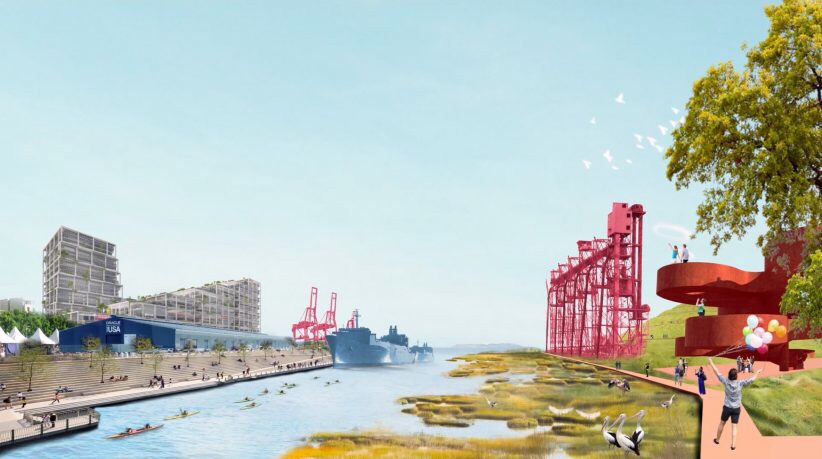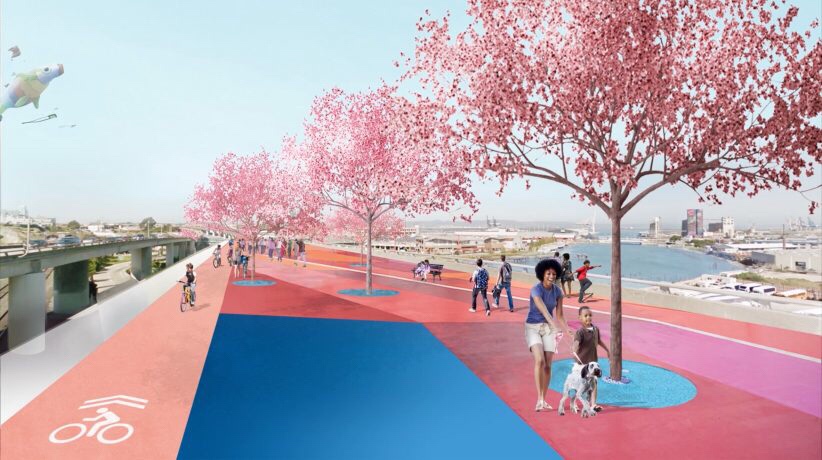Bjarke Ingels Group (BIG) has unveiled a speculative design proposal that aims—among many aspects—to populate the San Francisco Bay with floating villages as part of an effort to buttress the region against climate change–induced flooding.
The proposal is undertaken with One Architecture + Urbanism (ONE) and Sherwood Design Engineers and is among a slate of ten newly-announced schemes generated for the Resilient By Design Bay Area Challenge, a regional competition aimed toward generating ideas for how to best protect the Bay Area from rising sea levels.

Projections for the region call for a minimum of four feet in sea level rise under moderate warming conditions by 2100. The changes would bring flooding to the area much more frequently than is currently the case, a development that would devastate coastal communities. Many of those communities are built atop landfills over former marsh areas and tidal zones.
BIG’s proposal takes two routes in its effort to achieve its ambitious goals. First, the plan calls for restoring Islais Creek—a stubby inlet on the San Francisco side of the Bay sandwiched between the Dogpatch and Hunters Point neighborhoods—as part a larger plan for retrofitting the entire San Francisco Bay’s edge.

BIG’s conceptual masterplan for the San Francisco Bay envisions restoring the wetlands along the water’s edge lost to development while redistributing new population centers into the bay to create an urban archipelago connected by public ferries. The plan also proposes relocating and expanding the existing network of industrial, port, and warehouse activities into more compact configurations surrounded by trails, marshes, and parkland.

The scheme also calls for modernizing a stretch of Interstate-101 as a “machine for autonomous collective transit,” as explained by BIG founder Bjarke Ingels in a presentation video. The plan would create a Bus Rapid Transit loop in the south Bay that will anchor and connect new density nodes. The plan would extend to the southern edges of the Bay, as well, where existing salt palm and tidal marsh areas will be revisioned into experimental urban agriculture zones.
The proposal is joined by schemes from James Corner Field Operations and Hassell+, among other multidisciplinary groups, and follows a year-long research period that brought together designers, landscape architects, planners, politicians, and community activists from across the region.
For more information, see the Resilient by Design: Bay area Challenge website.











